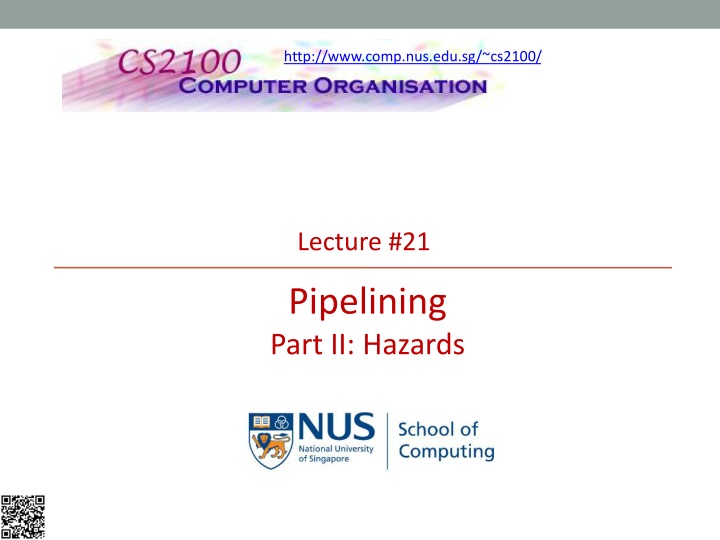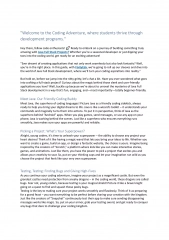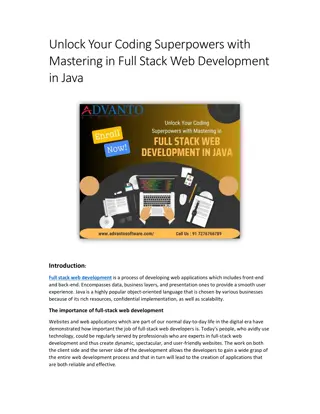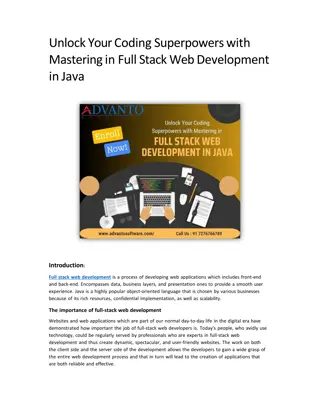
Pipeline Hazards and Solutions in CS2100 Lecture
Explore the complexities of pipeline hazards in Lecture #21 of CS2100, covering structural hazards, data dependencies, control hazards, and more. Discover graphical notations for program execution orders and examples of structural hazards, along with solutions like forwarding and stall mechanisms.
Download Presentation

Please find below an Image/Link to download the presentation.
The content on the website is provided AS IS for your information and personal use only. It may not be sold, licensed, or shared on other websites without obtaining consent from the author. If you encounter any issues during the download, it is possible that the publisher has removed the file from their server.
You are allowed to download the files provided on this website for personal or commercial use, subject to the condition that they are used lawfully. All files are the property of their respective owners.
The content on the website is provided AS IS for your information and personal use only. It may not be sold, licensed, or shared on other websites without obtaining consent from the author.
E N D
Presentation Transcript
http://www.comp.nus.edu.sg/~cs2100/ Lecture #21 Pipelining Part II: Hazards
Questions? Ask at https://sets.netlify.app/module/676ca3a07d7f5ffc1741dc65 OR Scan and ask your questions here! (May be obscured in some slides)
Aaron Tan, NUS Lecture #21: Pipelining II: Hazards 3 Lecture #21: Pipelining II 1. Pipeline Hazards 2. Structural Hazards 3. Instruction Dependencies 4. Data Hazards 4.1 Forwarding 4.2 Stall 4.3 Exercises
Aaron Tan, NUS Lecture #21: Pipelining II: Hazards 4 Lecture #21: Pipelining II 5. Control Dependency 6. Control Hazards 6.1 Early Branch 6.2 Branch Prediction 6.3 Delayed Branched 7. Multiple Issue Processors (reading)
Aaron Tan, NUS Lecture #21: Pipelining II: Hazards 5 1. Pipeline Hazards Speedup from pipeline implementation: Based on the assumption that a new instructions can be "pumped" into pipeline every cycle However, there are pipeline hazards Problems that prevent next instruction from immediately following previous instruction Structural hazards: Simultaneous use of a hardware resource Data hazards: Data dependencies between instructions Control hazards: Change in program flow Instruction Dependencies
Aaron Tan, NUS Lecture #21: Pipelining II: Hazards 6 1. Graphical Notation for Pipeline Time (in clock cycles) Program execution order (in instructions) CC 1 CC 2 CC 3 CC 4 CC 5 CC 6 lw $10, 20($1) IM Reg ALU DM Reg sub $11, $2, $3 IM Reg DM Reg ALU IM: Instruction Memory DM: Data Memory Horizontal = the stages of an instruction Vertical = the instructions in different pipeline stages
Aaron Tan, NUS Lecture #21: Pipelining II: Hazards 7 2. Structural Hazard: Example If there is only a single memory module: Time (clock cycles) Load and Inst3 access memory in the same cycle! ALU Mem Reg Mem Reg Load Instruction Order ALU Inst1 Mem Mem Reg Reg ALU Inst2 Mem Mem Reg Reg ALU Inst3 Mem Mem Reg Reg
Aaron Tan, NUS Lecture #21: Pipelining II: Hazards 8 2. Solution 1: Stall the Pipeline Time (clock cycles) ALU Mem Reg Mem Load Reg ALU Inst1 Mem Mem Reg Reg Instruction Order ALU Inst2 Mem Mem Reg Reg Stall Bubble Bubble Bubble Bubble Bubble ALU Mem Mem Reg Reg Inst3 Delay (Stall) Inst3 for 1 cycle
Aaron Tan, NUS Lecture #21: Pipelining II: Hazards 9 2. Solution 2: Separate Memory Split memory into Data and Instruction memory Time (clock cycles) Load uses Data Memory ALU Mem Reg Mem Load Reg Instruction Order ALU Inst1 Mem Mem Reg Reg ALU Inst2 Mem Mem Reg Reg ALU Inst3 Mem Mem Reg Reg Inst3 uses Instr. Memory
Aaron Tan, NUS Lecture #21: Pipelining II: Hazards 10 2. Quiz (1/2) Is there another conflict? Time (clock cycles) Inst0 and Inst3 are accessing the Register File in the same cycle. What if both access the same register? ALU Inst0 Mem Mem Reg Reg Instruction Order ALU Inst1 Mem Mem Reg Reg ALU Reg Inst2 Mem Reg Mem ALU Inst3 Mem Reg Mem Reg
Aaron Tan, NUS Lecture #21: Pipelining II: Hazards 11 2. Quiz (2/2) Recall that registers are very fast memory. Solution: Split cycle into half; first half for writing into a register; second half for reading from a register. Time (clock cycles) Inst0 writes into the register during the first half of the cycle. ALU Inst0 Mem Mem Reg Reg Instruction Order ALU Inst1 Mem Mem Reg Reg ALU Reg Inst2 Mem Reg Mem ALU Inst3 Mem Reg Mem Reg Inst3 reads from the register during the second half of the cycle.
Aaron Tan, NUS Lecture #21: Pipelining II: Hazards 12 3. Instruction Dependencies Instructions can have relationship that prevent pipeline execution: Although a partial overlap maybe possible in some cases When different instructions accesses (read/write) the same register Register contention is the cause of dependency Known as data dependency When the execution of an instruction depends on another instruction Control flow is the cause of dependency Known as control dependency Failure to handle dependencies can affect program correctness!
Aaron Tan, NUS Lecture #21: Pipelining II: Hazards 13 3. Data Dependency: RAW "Read-After-Write" Definition: Occurs when a later instruction reads from the destination register written by an earlier instruction Also known as true data dependency i1: add $1, $2, $3 #writes to $1 i2: sub $4, $1, $5 #reads from $1 Effect of incorrect execution: If i2 reads register $1 before i1 can write back the result, i2 will get a stale result (old result)
Aaron Tan, NUS Lecture #21: Pipelining II: Hazards 14 3. Other Data Dependencies Similarly, we have: WAR: Write-after-Read dependency WAW: Write-after-Write dependency Fortunately, these dependencies do not cause any pipeline hazards They affect the processor only when instructions are executed out of program order: i.e. in Modern SuperScalar Processor
Aaron Tan, NUS Lecture #21: Pipelining II: Hazards 15 4. RAW Dependency: Hazards? Suppose we are executing the following code fragment: sub $2, $1, $3 #i1 and $12, $2, $5 #i2 or $13, $6, $2 #i3 add $14, $2, $2 #i4 sw $15, 100($2) #i5 Note the multiple uses of register $2 Question: Which are the instructions require special handling?
Aaron Tan, NUS Lecture #21: Pipelining II: Hazards 16 4. RAW Data Hazards Value from prior instruction is needed before write back Time (in clock cycles) CC 1 CC 2 CC 3 CC 4 CC 5 CC 6 CC 7 CC 8 CC 9 Value of register $2: 10 10 10 10 10/ 20 20 20 20 20 Reg sub $2, $1, $3 IM Reg DM Data dependency and $12, $2, $5 IM DM R eg Reg No problem IM DM Reg or $13, $6, $2 Reg add $14, $2, $2 IM DM Reg Reg sw $15, 100($2) IM DM Reg Reg
Aaron Tan, NUS Lecture #21: Pipelining II: Hazards 17 4. RAW Data Hazards: Observations Questions: When is the result from sub instruction actually produced? End of EX stage for sub or clock cycle 3 When is the data actually needed by and? Beginning of and s EX stage or clock cycle 4 When is the data actually needed by or? Beginning of or s EX stage or clock cycle 5 Solution: Forward the result to any trailing (later) instructions before it is reflected in register file Bypass (replace) the data read from register file
Aaron Tan, NUS Lecture #21: Pipelining II: Hazards 18 4.1 RAW Data Hazards: Forwarding Time (in clock cycles) CC 7 CC 8 CC 9 CC 1 CC 2 CC 3 CC 4 CC 5 CC 6 Value of register $2 : Value of EX/MEM : Value of MEM/WB : 10 X X 10 X X 10 X X 10 20 X 10/ 20 X 20 20 X X 20 X X 20 X X 20 X X Forward results from one stage to another Bypass data read from register file sub $2, $1, $3 IM Reg DM Reg Reg DM and $12, $2, $5 IM Reg or $13, $6, $2 IM Reg DM Reg add $14, $2, $2 IM DM Reg Reg sw $15, 100($2) IM DM Reg Reg
Aaron Tan, NUS Lecture #21: Pipelining II: Hazards 19 4.2 Data Hazards: LOAD Instruction Time (in clock cycles) CC 1 CC 2 CC 3 CC 4 CC 5 CC 6 CC 7 CC 8 CC 9 Cannot solve with forwarding! Data is needed before it is actually produced! Reg lw $2, 20($1) IM DM Reg Reg DM and $4, $2, $5 IM Reg or $8, $2, $6 IM Reg DM Reg add $9, $4, $2 IM Reg DM Reg slt $1, $6, $7 IM DM Reg Reg
Aaron Tan, NUS Lecture #21: Pipelining II: Hazards 20 4.2 Data Hazards: LOAD Instruction Solution Program execution order (ininstructions) Tim e(inclockcycles) CC1 CC2 CC3 CC4 CC5 CC6 CC7 CC8 CC9 CC10 Stall the pipeline! Reg DM Reg IM lw$2,20($1) Reg DM Bubble IM Reg and$4,$2,$5 Reg or$8,$2,$6 DM Reg Bubble IM add$9,$4,$2 Reg IM DM Reg slt$1,$6,$7 Reg DM IM Reg
Aaron Tan, NUS Lecture #21: Pipelining II: Hazards 21 4.3 Exercise #1 How many cycles will it take to execute the following code on a 5-stage pipeline without forwarding? with forwarding? sub $2, $1, $3 and $12, $2, $5 or $13, $6, $2 add $14, $2, $2 sw $15, 100($2)
Aaron Tan, NUS Lecture #21: Pipelining II: Hazards 22 4.3 Exercise #1: Without Forwarding sub $2, $1, $3 and $12, $2, $5 or $13, $6, $2 add $14, $2, $2 sw $15, 100($2) 1 2 3 4 5 6 7 8 9 10 11 sub IF ID EX MEM WB and IF ID EX MEM WB or IF ID EX MEM WB add IF ID EX MEM WB sw IF ID EX MEM WB
Aaron Tan, NUS Lecture #21: Pipelining II: Hazards 23 4.3 Exercise #1: With Forwarding sub $2, $1, $3 and $12, $2, $5 or $13, $6, $2 add $14, $2, $2 sw $15, 100($2) 1 2 3 4 5 6 7 8 9 10 11 sub IF ID EX MEM WB and IF ID EX MEM WB or IF ID EX MEM WB add IF ID EX MEM WB sw IF ID EX MEM WB
Aaron Tan, NUS Lecture #21: Pipelining II: Hazards 24 4.3 Exercise #2 How many cycles will it take to execute the following code on a 5-stage pipeline without forwarding? with forwarding? lw $2, 20($3) and $12, $2, $5 or $13, $6, $2 add $14, $2, $2 sw $15, 100($2)
Aaron Tan, NUS Lecture #21: Pipelining II: Hazards 25 4.3 Exercise #2: Without Forwarding lw $2, 20($3) and $12, $2, $5 or $13, $6, $2 add $14, $2, $2 sw $15, 100($2) 1 2 3 4 5 6 7 8 9 10 11 lw IF ID EX MEM WB and IF ID EX MEM WB or IF ID EX MEM WB add IF ID EX MEM WB sw IF ID EX MEM WB
Aaron Tan, NUS Lecture #21: Pipelining II: Hazards 26 4.3 Exercise #2: With Forwarding lw $2, 20($3) and $12, $2, $5 or $13, $6, $2 add $14, $2, $2 sw $15, 100($2) 1 2 3 4 5 6 7 8 9 10 11 lw IF ID EX MEM WB and IF ID EX MEM WB or IF ID EX MEM WB add IF ID EX MEM WB sw IF ID EX MEM WB
Aaron Tan, NUS Lecture #21: Pipelining II: Hazards 27 5. Control Dependency Definition: An instruction j is control dependent on i if icontrols whether or not j executes Typically i would be a branch instruction Example: i1: beq $3, $5, label i2: add $1, $2, $4 ... ... ... # branch # depends on i1 Effect of incorrect execution: If i2 is allowed to execute before i1 is determined, register $1 maybe incorrectly changed!
Aaron Tan, NUS Lecture #21: Pipelining II: Hazards 28 5. Control Dependency: Example Let us turn to a code fragment with a conditional branch: 40 44 48 52 .. 72 beq $1, $3, 7 and $12, $2, $5 or $13, $6, $2 add $14, $2, $2 ......... lw $4, 5($7) $1 $3 $1 = $3 How does the code affect a pipeline processor?
Aaron Tan, NUS Lecture #21: Pipelining II: Hazards 29 5. Pipeline Execution: IF Stage Read instruction from memory using the address in PC and put it in IF/ID register PC address is incremented by 4 and then written back to the PC for next instruction
Aaron Tan, NUS Lecture #21: Pipelining II: Hazards 30 5. Control Dependency: Why? PCSrc ID/EX 0 M u x 1 WB EX/MEM Control M WB MEM/WB EX M WB IF/ID Add Add result 4 Add RegWrite Branch Shift left 2 MemWrite ALUSrc Read register 1 MemtoReg Instruction Address PC Read data 1 Read register 2 Zero Instruction memory Registers ALU Read data 2 ALU result 0 M u x 1 Read data Write register Address 1 M u x Data memory Write data 0 Write data Instruction [15 0] 16 32 6 Decision is made in MEM stage: Too late! Sign extend ALU control MemRead Instruction [20 16] 0 ALUOp M u x 1 Instruction [15 11] RegDst
Aaron Tan, NUS Lecture #21: Pipelining II: Hazards 31 5. Control Dependency: Example Time (in clock cycles) Program execution order (in instructions) CC 1 CC 2 CC 3 CC 4 CC 5 CC 6 CC 7 CC 8 CC 9 Wrong Execution! 40 beq $1, $3, 7 IM Reg DM Reg 44 and $12, $2, $5 IM Reg DM Reg 48 or $13, $6, $2 IM Reg DM Reg 52 add $14, $2, $2 IM Reg DM Reg 72 lw $4, 50($7) Reg DM Reg IM
Aaron Tan, NUS Lecture #21: Pipelining II: Hazards 32 6. Control Hazards: Stall Pipeline? Time (in clock cycles) Program execution order (in instructions) CC 1 CC 2 CC 3 CC 4 CC 5 CC 6 CC 7 CC 8 CC 9 40 beq $1, $3, 7 IM Reg DM Reg Bubble Bubble Bubble Bubble Bubble Bubble Bubble Bubble Bubble Bubble Bubble Bubble Bubble Bubble Bubble Reg DM Reg IM 72 lw $4, 50($7) Wait until the branch outcome is known and then fetch the correct instructions Introduces 3 clock cycles delay
Aaron Tan, NUS Lecture #21: Pipelining II: Hazards 33 6. Control Hazards: Reducing the Penalty Branching is very common in code: A 3-cycle stall penalty is too heavy! Many techniques invented to reduce the control hazard penalty: Move branch decision calculation to earlier pipeline stage Early Branch Resolution Guess the outcome before it is produced Branch Prediction Do something useful while waiting for the outcome Delayed Branching
Aaron Tan, NUS Lecture #21: Pipelining II: Hazards 34 6.1 Reduce Stalls: Early Branch (1/3) Make decision in ID stage instead of MEM Move branch target address calculation Move register comparison cannot use ALU for register comparison any more Branch target address calculation Target address PC + 4 Add Shift left 2 ALUcontrol 4 Read register 1 Read register 2 Write register Write data Read data 1 To branch Control logic Zero Instruction ALU ALU result Register File Read data 2 RegWrite Sign extend Register Comparison 16 32
Aaron Tan, NUS Lecture #21: Pipelining II: Hazards 35 6.1 Reduce Stalls: Early Branch (2/3) Register comparison moved to ID stage
Aaron Tan, NUS Lecture #21: Pipelining II: Hazards 36 6.1 Reduce Stalls: Early Branch (3/3) Time (in clock cycles) Program execution order (in instructions) CC 1 CC 2 CC 3 CC 4 CC 5 CC 6 CC 7 CC 8 CC 9 40 beq $1, $3, 7 IM Reg DM Reg Bubble Bubble Bubble Bubble Bubble 72 lw $4, 50($7) Reg DM Reg IM Wait until the branch decision is known: Then fetch the correct instruction Reduced from 3 to 1 clock cycle delay
Aaron Tan, NUS Lecture #21: Pipelining II: Hazards 37 6.1 Early Branch: Problems (1/3) However, if the register(s) involved in the comparison is produced by preceding instruction: Further stall is still needed! Time (in clock cycles) Program execution order (in instructions) CC 1 CC 2 CC 3 CC 4 CC 5 CC 6 CC 7 CC 8 CC 9 $s0 is needed before it is produced! Reg IM DM Reg add $s0, $s1, $s2 IM Reg DM Reg beq $s0, $s3, Exit IM Reg DM Reg Bubble
Aaron Tan, NUS Lecture #21: Pipelining II: Hazards 38 6.1 Early Branch: Problems (2/3) Solution: Add forwarding path from ALU to ID stage One clock cycle delay is still needed Time (in clock cycles) Program execution order (in instructions) CC 1 CC 2 CC 3 CC 4 CC 5 CC 6 CC 7 CC 8 CC 9 Reg IM DM Reg add $s0, $s1, $s2 IM Reg DM Reg beq $s0, $s3, Exit Bubble IM Reg DM Reg Bubble
Aaron Tan, NUS Lecture #21: Pipelining II: Hazards 39 6.1 Early Branch: Problems (3/3) Problem is worse with load followed by branch Solution: MEM to ID forwarding and 2 more stall cycles! In this case, we ended up with 3 total stall cycles no improvement! Time (in clock cycles) Program execution order (in instructions) CC 1 CC 2 CC 3 CC 4 CC 5 CC 6 CC 7 CC 8 CC 9 ALU ID forwarding cannot help! Reg IM DM Reg lw $s0, 0($s1) IM Reg DM Reg beq $s0, $s3, Exit Bubble Bubble IM Reg DM Reg Bubble
Aaron Tan, NUS Lecture #21: Pipelining II: Hazards 40 6.2 Reduce Stalls: Branch Prediction There are many branch prediction schemes We only cover the simplest in this course Simple prediction: All branches are assumed to be not taken Fetch the successor instruction and start pumping it through the pipeline stages When the actual branch outcome is known: Not taken: Guessed correctly No pipeline stall Taken: Guessed wrongly Wrong instructions in the pipeline Flush successor instruction from the pipeline
Aaron Tan, NUS Lecture #21: Pipelining II: Hazards 41 6.2 Branch Prediction: Correct Prediction Time (in clock cycles) Program execution order (in instructions) CC 1 CC 2 CC 3 CC 4 CC 5 CC 6 CC 7 CC 8 CC 9 40 beq $1, $3, 7 IM Reg DM Reg 44 and $12, $2, $5 IM Reg DM Reg 48 or $13, $6, $2 IM Reg DM Reg 52 add $14, $2, $2 Branch is known to be not taken in cycle 3 no stall needed!
Aaron Tan, NUS Lecture #21: Pipelining II: Hazards 42 6.2 Branch Prediction: Wrong Prediction Time (in clock cycles) Program execution order (in instructions) CC 1 CC 2 CC 3 CC 4 CC 5 CC 6 CC 7 CC 8 CC 9 40 beq $1, $3, 7 IM Reg DM Reg 44 and $12, $2, $5 IM Bubble Bubble Bubble Bubble IM Reg DM Reg 72 lw $4, 50($7) Branch is known to be taken in cycle 3 "and" instruction should not be executed Flushed from pipeline
Aaron Tan, NUS Lecture #21: Pipelining II: Hazards 43 6.2 Exercise #3: Branch Prediction How many cycles will it take to execute the following code on a 5-stage pipeline with forwarding and without branch prediction? with branch prediction (predict not taken)? addi $s0, $zero, 10 Loop: addi $s0, $s0, -1 bne $s0, $zero, Loop sub $t0, $t1, $t2 Decision making moved to ID stage Total instructions = 1 + 10 2 + 1 = 22 Ideal pipeline = 4 + 22 = 26 cycles
Aaron Tan, NUS Lecture #21: Pipelining II: Hazards 44 6.2 Exercise #3: Without Branch Prediction 1 2 3 4 5 6 7 8 9 10 11 IF ID EX MEM WB addi1 addi2 IF ID EX MEM WB IF ID EX MEM WB bne addi2 IF ID EX MEM WB Data dependency between (addi $s0, $s0, -1) and bne incurs 1 cycle of delay. There are 10 iterations, hence 10 cycles of delay. Every bne incurs a cycle of delay to execute the next instruction. There are 10 iterations, hence 10 cycles of delay. Total number of cycles of delay = 20. Total execution cycles = 26 + 20 = 46 cycles.
Aaron Tan, NUS Lecture #21: Pipelining II: Hazards 45 6.2 Exercise #3: With Branch Prediction 1 2 3 4 5 6 7 8 9 10 11 addi1 IF ID EX MEM WB addi2 IF ID EX MEM WB bne IF ID EX MEM WB sub IF addi2 IF ID EX MEM WB Predict not taken. The data dependency remains, hence 10 cycles of delay for 10 iterations. In the first 9 iterations, the branch prediction is wrong, hence 1 cycle of delay. In the last iteration, the branch prediction is correct, hence saving 1 cycle of delay. Total number of cycles of delay = 19. Total execution cycles = 26 + 19 = 45 cycles.
Aaron Tan, NUS Lecture #21: Pipelining II: Hazards 46 6.3 Reduce Stalls: Delayed Branch Observation: Branch outcome takes X number of cycles to be known X cycles stall Idea: Move non-control dependent instructions into the X slots following a branch Known as the branch-delay slot These instructions are executed regardless of the branch outcome In our MIPS processor: Branch-Delay slot = 1 (with the early branch)
Aaron Tan, NUS Lecture #21: Pipelining II: Hazards 47 6.3 Delayed Branch: Example Non-delayed branch Delayed branch add $1, $2, $3 sub $4, $5, $6 beq $1, $4, Exit or $8, $9, $10 xor $10, $1, $11 or $8, $9, $10 add $1, $2, $3 sub $4, $5, $6 beq $1, $4, Exit xor $10, $1, $11 Exit: Exit: The "or" instruction is moved into the delayed slot: Get executed regardless of the branch outcome Same behavior as the original code!
Aaron Tan, NUS Lecture #21: Pipelining II: Hazards 48 6.3 Delayed Branch: Observation Best case scenario There is an instruction preceding the branch which can be moved into the delayed slot Program correctness must be preserved! Worst case scenario Such instruction cannot be found Add a no-op (nop) instruction in the branch-delay slot Re-ordering instructions is a common method of program optimization Compiler must be smart enough to do this Usually can find such an instruction at least 50% of the time
Aaron Tan, NUS Lecture #21: Pipelining II: Hazards 49 For reading only 7. Multiple Issue Processors (1/2) Multiple Issue processors Multiple instructions in every pipeline stage 4 washer, 4 dryer Static multiple issue: EPIC (Explicitly Parallel Instruction Computer) or VLIW (Very Long Instruction Word), e.g. IA64 Compiler specifies the set of instructions that execute together in a given clock cycle Simple hardware, complex compiler Dynamic multiple issue: Superscalar processor: Dominant design of modern processors Hardware decides which instructions to execute together Complex hardware, simpler compiler
Aaron Tan, NUS Lecture #21: Pipelining II: Hazards 50 For reading only 7. Multiple Issue Processors (2/2) A 2-wide superscalar pipeline: By fetching and dispatching two instructions at a time, a maximum of two instructions per cycle can be completed.






















